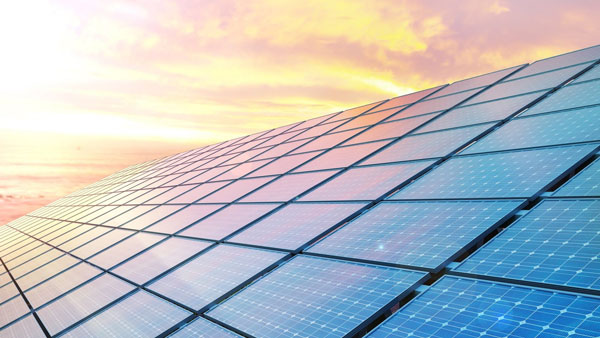Panel Surface Inspection for Pollen and Dust
Because of the amount of pollen and dust that builds up, spring is an important time to have your solar panels cleaned. One of the first steps in a spring check up involves making sure that you closely examine and test the surface layer on each panel.
How to Spot Pollen and Dust GathermentInspect All Panels Visually Pollen may look like a fine layer of yellow, while dust takes on the appearance of gray or brown as times goes by. It is necessary to distinguish between these and other residues like bird droppings or leaves, these need another process in the cleaning.
Cleaning ProcessSelect The Correct Time:
Clean in warmness more than the early morning or late nighttime to avoid hot sunlight, which could quickly dry cleaning answers leaving smudges.
Choose the Right Tools:Grab a soft brush or microfiber cloth with a long handle. Avoiding scratching the surface of the panel hard materials
Use The Right Cleaning Solution:Mild soap and water should be good. There are industrial solar panel cleansing solutions within the market place having said that be particular they may be low abrasive, along with lacking any nasty chemical compounds.
Soft Washing Technic:Without using high-pressure water, sweep your brush over the panels - if you go in a horizontal motion it would be great to release dirt and pollen without scratching.
Rinse After washing, rinse the panels thoroughly with clean water to remove any soap residue that may end up attracting more dirt.
Frequency of CleaningThis may depend on how dusty & dirty the air is in your local environment. For those areas where pollen levels are most severe, you may need to clean the panels a few times per month during the spring. TRACK YOUR SOLAR PANELS: The efficiency of your panels decline you may want to consider washing.
Inspect And Maintain It ProperlyHave regular professional inspections done every couple of years. Professionals can do a more thorough inspection and also get rid of stubborn stains And they also can see if the panels or wiring system was physically tampered with in a way that could present issues.
Wiring and Connection Check
Solar panel maintenance in the spring involves more than just operating up a cloth to wipe them down, you will also want to make sure your electrical connections and wiring are properly attached.
Initial Visual InspectionInspect for Bare Wires: Make sure that there are no wires which have become exposed through wear in the insulation or activity by animals it was winterized known to attract.
Corrosion to the Connections: Outside connections can have corrosion due to moisture and environmental exposure.
If a safe and tight connectionircuit connections are all the wiring Loose connections can be inefficient or even dangerous.
Test Connections Using a MultimeterVoltage Test- Check for the voltage output from your panels to make sure it is operating in accordance with panel specifications.
As well as on the continuity of wiring- check that there are no breaks, otherwise a flow in electricity will be disturbed.
Junction Box: The junction box, conveniently located at the rear side of solar panel.
Seal Integrity: Verify that the seal of the junction box has not been broken, this is important to stop shorting by water ingress.
Shield Connection: All connections are tightened in the junction box/ No wire is frayed or removed.
Tighten Connections: Use the appropriate tools to tighten any loose connections. Always ensure to the power off before making any modifications.
Worn Parts Replacement: If the connectors and wire display visible wear, corrosion or aging replace it to prevent future failures.
Inverter Performance Assessment
Beginning with Solar Panels Checking the inverter of a solar energy system is one part of your spring maintenance plan that cannot be ignored.
Inverter Display and LEDsLook at the display and status indication lights of inverter. Check the display for error messages and warning symbols. Typical signs could consist of low voltage, hot BMSs or grid issues. LED indicators: These usually provide status of the operational state. Green is typically a normal operation, while red or yellow lights can indicate problems.
Output Voltage and Current MeasurementNext is Voltage Measurement
:-
Check the AC output of the inverter to be approximately 120V or 240V depending on your system voltage.
Current Measurement:
Compare the output current to your inverter model specifications. All of these changes, however small they may be in isolation, are hints to spot performance problem.
Monitoring EfficiencyEfficiency Ratings
:
Verify the efficiency rating from inverter manufacturer. For cost effective inverters that the public has access to your inverter should be 95%~ or higher efficient.
Efficiency Comparison:
Calculate efficiency by comparing DA Power provided from the panels with AC Output power. Efficiency (%) = (AC Output Power/DC Input Power)×100
Many inverters have data logging capabilities. Study past performance data to detect trends or drops in productivity.
Listening for Unusual NoisesThe best inverters do their job quietly. Be attentive to any unfamiliar noise which may be a symptom of:
Humming or Buzzing:
It is normal for an appliance to hum slightly, but loud buzzing and crackling noises are not. All of those can cue electrical problems or a dying part.
Cooling Fan:
If the inverter unit is placed inside a closed area, make sure that its cooling fan works properly.
Software and Firmware UpdatesPatch the software and firmware on your inverter. Look for updates on the official page.
Update Process:
Celebrate as you would when turn up the new firmware for inverter, any additional guidance to update versioniscing performance should be followed
Professional ServicingService Contracts
:
A lot of manufacturers have service contracts and some require you to have professional checks done on a regular basis.
Professional Diagnosis:
Professionals have the ability to conduct more thorough diagnostics and repairs beyond basic home owner checks.
Shade Evaluation as Trees Bloom
When trees around a residential area grow new leaves in the spring, they may shade the solar panels, reducing energy output.
Evaluate Tree Growth and Shade BenefitsPerform a Visual Inspection of the Solar Array First, visually scan the area around the solar panels:
Scan for Growth Patterns: Note any trees and plants that may have grown noticeably since the last inspection. Keep in mind that new branches may have grown, shading the solar panels, and leaves may have taken over your space.
Quantify Shade ImpactSolar Production Forecast Data: Compare your current production to historical production at the same time. A sharp drop may indicate more shading.
Digital tools - SolarEdge or Sunny Portal provide very detailed shading and energy production analysis.
For a solar panel system in a low-slung suburban area with some tall trees around it:
First inspection in the spring: The homeowners observed a 15% decrease in energy production compared to last year.
Shadow Analysis: By using Solar Pathfinder, they realized that the two oak trees had now grown large enough to cast a considerable amount of shadow on the solar panels in the mornings.
Action - Based on this analysis, the homeowner decided to trim overhanging branches and allow more sunlight in.
Tree Pruning: Hire an arborist to trim or prune trees that are shading the panels. It ensures the safety and health of the trees while increasing the yield of the panels.
Selective Removal: For excessive shading, selective branches or even entire trees can be removed if necessary/allowed.
Develop a Planting Strategy: When planting new trees or shrubs, plan them in a way that they will not shade the solar panels.
PV Monitoring Platform: Turn on the alert system on your solar monitoring platform to notify you when there is a significant drop in yield, which may mean there is a shading issue.
Drones and Imaging = Use drones with cameras to take pictures from above your home, i.e. drone footage, to understand how trees need our attention.
Energy Output Comparison Pre and Post Cleaning
Not cleaning your solar panels in the spring can severely impact their energy output.
Collecting Baseline DataMonitoring Timeframe: Energy output should be recorded for at least one week before cleaning. Collect daily and hourly data using a solar reporting system.
Weather: Make sure metadata is combined with similar weather for fair comparisons. Make note of any rain or cloud cover that changes the light.
Supplies Needed: A soft brush, microfiber cloth (or an old t-shirt; don’t dust), a moderate amount of detergent, and clean water.
Cleaning Method: Gently wipe the surface of each panel to remove any pollen, dust, or other debris, making sure to rinse thoroughly so that no soap is left behind.
Time: The ideal time for cleaning is at dawn or dusk so that the water doesn’t evaporate quickly and leave streaks.
Monitoring Time: Energy production after cleaning should be recorded for at least one week in similar weather conditions as before cleaning.
Data Points: Daily and hourly energy production can identify detailed improvements.
Percent Increase: Calculate how much percent your energy output increased using this formula; Percent Increase (%) = (Output after cleaning − Output before cleaning / Output before cleaning) × 100
Example: If the average daily output before and after cleaning is 5 kWh, where the KWh represents how much you cleaned, the percentage increase is less: (6−55)×100=20%\left(\frac{6 - 5}{5}\right)\times100 = 20\%(56−5)×100=20%
Example of pre-cleaning data: The homeowner recorded an average of 7kWh of output per day over seven days.
Cleaning: Wash the panels to remove accumulated dirt and pollen
Data after cleaning: Average power generation increased by up to 8.5 kWh per day over the next week compared to pre-cleaning data.
Percent change in energy output = (8.5−77)/7 ×100 = 21.4%
Data log: Data log of energy output before and after cleaning and weather conditions on the day of cleaning.
Create graphs: Make some visually nice graphs to represent the improvement in energy output so we can clearly see if we are improving during the cleaning phase.



